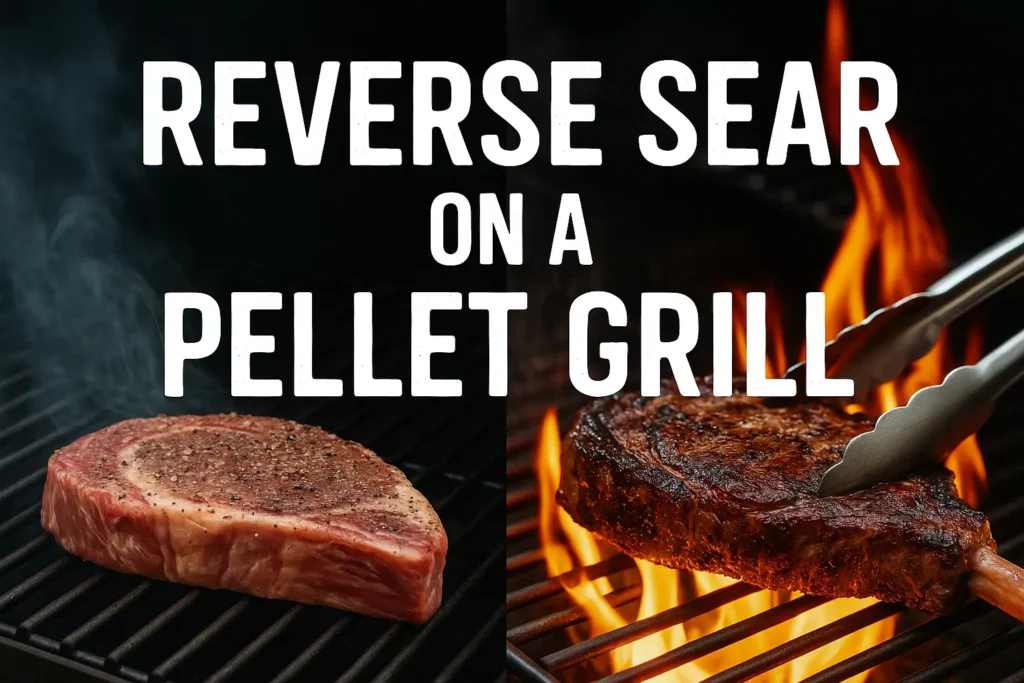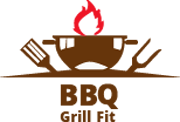This post may contain affiliate links. If you use these links to buy something we may earn a small commission. Thanks.
If you’re seeking that perfect combination of smoky flavor and a crispy seared crust on your steak or roast, there’s one technique that grill masters and backyard chefs alike swear by reverse searing. This two-phase cooking method delivers unbeatable flavor, tenderness, and presentation, especially when done on a pellet grill.
In this comprehensive guide, you’ll learn exactly how to reverse sear on a pellet grill, from choosing your meat to that satisfying final sear. Whether you’re a weekend warrior or an aspiring pitmaster, this technique can take your grilling to the next level.
Introduction
Pellet grills have revolutionized home cooking, especially for those who crave wood-fired flavor without the complexity of traditional smokers. Their precise temperature control and indirect heating make them ideal for reverse searing.
Reverse searing involves slowly cooking meat at a low temperature until nearly done, then finishing it with a quick, high-heat sear. This method allows you to infuse smoke, keep meat juicy, and finish with a mouthwatering crust.

What Is Reverse Searing?
Reverse searing is essentially a flip of the traditional grilling approach. Instead of starting with a high-heat sear and then finishing at lower heat, you cook your meat slowly at a low temperature first, then sear it at the end. This method is especially effective for thick cuts of meat, which benefit from the gentle cooking process that ensures even doneness from edge to edge.
Key Benefits:
- Even internal temperature with minimal gray banding
- More smoke absorption during the low-temperature phase
- Better moisture retention
- A consistent, golden-brown crust when seared at the end
Best Cuts for Reverse Searing:
- Ribeye
- New York Strip
- Tomahawk steak
- Filet Mignon
- Pork chops
- Tri-tip
- Beef tenderloin
Tools and Ingredients You’ll Need
Reverse searing on a pellet grill doesn’t require much more than basic grilling gear, but a few essential tools can ensure perfection.
Essential Equipment:
- Pellet grill (Traeger, Pit Boss, Camp Chef, etc.)
- Wood pellets (oak, hickory, mesquite for bold flavors)
- Meat thermometer (preferably digital with a probe)
- Cast iron skillet or grill grates (optional for better crust)
- Tongs (not a fork—don’t pierce the meat!)
Ingredients:
- High-quality thick-cut meat (1.5–2 inches thick)
- Kosher salt and freshly cracked black pepper
- Optional: Garlic powder, rosemary, thyme, or compound butter
Preparing Your Meat
The quality and preparation of your meat are just as important as how you cook it. Start with a thick, well-marbled cut.
Step-by-Step Preparation:
- Trim excess fat: Especially hard fat that won’t render during cooking.
- Season generously: Apply kosher salt and black pepper at least 30–60 minutes in advance. For more flavor, season overnight (dry brining).
- Bring to room temperature: Let the meat sit on the counter for 30–45 minutes to promote even cooking.
- Optional marinade or rub: Avoid sugar-based rubs until after the sear, as they can burn.
Dry brining draws moisture to the surface and then reabsorbs it, locking flavor deep into the muscle fibers. This helps create a juicy, flavorful bite even before you start cooking.
Setting Up the Pellet Grill for Reverse Sear
Pellet grills are perfect for reverse searing because they offer consistent indirect heat and natural wood smoke. Here’s how to get started:
1. Choose the Right Pellets
Each wood type offers a distinct flavor:
- Oak: Strong but balanced
- Hickory: Classic bold BBQ flavor
- Mesquite: Intense and earthy (great for beef)
- Apple or Cherry: Milder, slightly sweet (great for pork or poultry)
2. Preheat to 225°F–250°F
Set your pellet grill to a low temperature. This gives your meat time to absorb smoke and slowly come up to temp.
3. Indirect Heat Setup
Place meat on the opposite side of the firepot or use the upper rack if your grill has one. Make sure the lid stays closed during cooking to maintain consistent temps.
4. Optional Water Pan
A small water pan can be added to prevent the meat from drying out, especially during longer cooks.
The Smoking Phase
This is where your meat develops that beautiful smoky flavor and begins cooking evenly from edge to center.
1. Place the Meat on the Grill
Put the meat on the cool side of the grill. Insert your temperature probe into the thickest part of the cut, avoiding bone or fat pockets.
2. Monitor Internal Temperature
Aim to remove the meat 10–15°F below your desired doneness. Here’s a handy guide:
| Doneness | Target Temp to Remove | Final Temp After Searing |
|---|---|---|
| Rare | 110–115°F | 120–125°F |
| Medium-Rare | 120–125°F | 130–135°F |
| Medium | 130–135°F | 140–145°F |
| Medium-Well | 140–145°F | 150–155°F |
3. Estimated Smoking Time
- For a 1.5-inch thick steak: 45–60 minutes
- For thicker cuts like tomahawk or tri-tip: 60–90+ minutes
Keep your thermometer handy and don’t rely on time alone.
The Searing Phase
Once your meat reaches the desired pre-sear temperature, it’s time for the magic: high-heat searing.
Option 1: Crank Up the Pellet Grill
Raise your pellet grill’s temperature to 450°F–500°F and give it about 10–15 minutes to fully preheat.
Option 2: Use a Cast Iron Skillet
Place a cast iron skillet directly on the grill or over a propane burner. Let it heat until it’s almost smoking, then add a touch of oil with a high smoke point (like avocado or canola oil).
Searing Steps:
- Remove meat from grill and let rest 5–10 minutes while the searing surface gets hot.
- Sear each side for 1–2 minutes. You want a deep brown crust, not a gray or charred surface.
- Sear the edges if the cut is thick enough, especially for ribeyes or tomahawks.
- Add flavor: During the final minute, you can baste with garlic butter or sprinkle fresh herbs.
The goal is not to cook the meat further but simply to create that crave-worthy crust.
Resting and Serving
After searing, it’s crucial to let your meat rest to allow the juices to redistribute.
Resting Guidelines:
- Rest time: 5–10 minutes
- Tent loosely with foil
- Do not cut too early — juices will spill out, leaving the meat dry
Serving Suggestions:
- Slice against the grain for maximum tenderness
- Top with a pat of compound butter or a sprinkle of sea salt
- Pair with grilled vegetables, roasted potatoes, or a side salad
Presentation counts. Slice your steak and fan it out on the plate to show off that pink interior and crusty edge.
Reverse Searing Tips and Tricks
Here are some advanced tips to perfect your reverse sear:
- Use a dual-probe thermometer to monitor both meat and grill temp
- Rest before searing to avoid a temperature overshoot during the crust phase
- Butter basting during sear adds richness and golden color
- Avoid flipping too often — sear one side at a time to develop crust
- Add herbs and aromatics like thyme, rosemary, or smashed garlic in the skillet
For extra flavor, try brushing the steak with melted butter infused with garlic and herbs just before the final sear.
Common Mistakes to Avoid
Reverse searing is simple, but a few pitfalls can derail your success:
| Mistake | Why It’s a Problem |
|---|---|
| Searing too early | Results in undercooked center |
| Using too thin a cut | Overcooks quickly, leaving no time to sear |
| Not using a thermometer | Leads to guesswork and inconsistent results |
| Searing at low temperature | Doesn’t develop a proper crust |
| Piercing the meat with forks | Releases juices and dries out the meat |
Conclusion
Reverse searing on a pellet grill is more than just a cooking technique — it’s a method that combines precision, flavor, and presentation into one foolproof approach. Whether you’re cooking ribeyes for a special occasion or experimenting with pork chops on the weekend, reverse searing ensures your meat is juicy inside and beautifully seared outside.
With the consistent heat and natural wood smoke of a pellet grill, anyone can achieve steakhouse-level results right in their backyard. Give it a try, and you may never go back to traditional grilling again.
